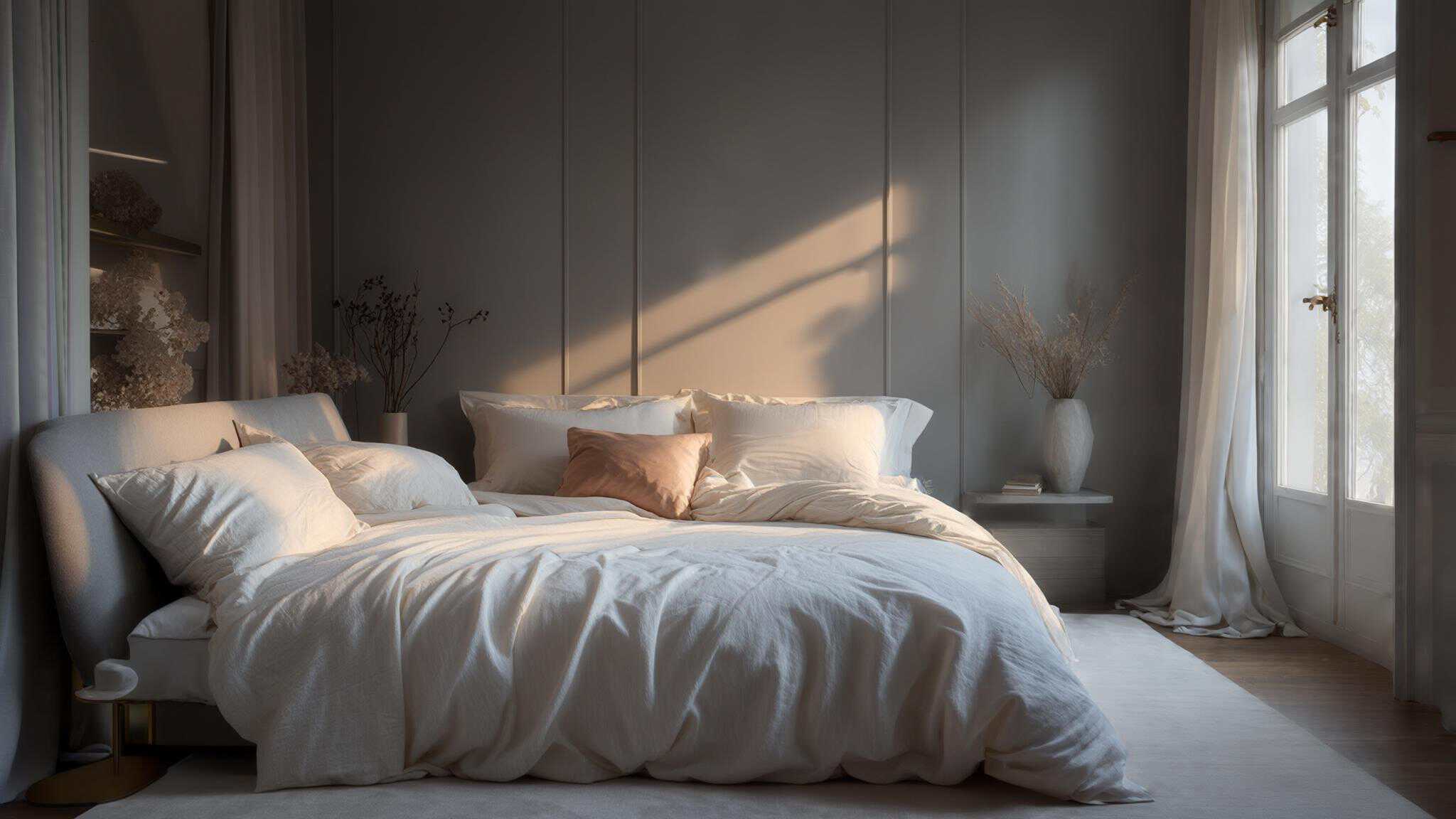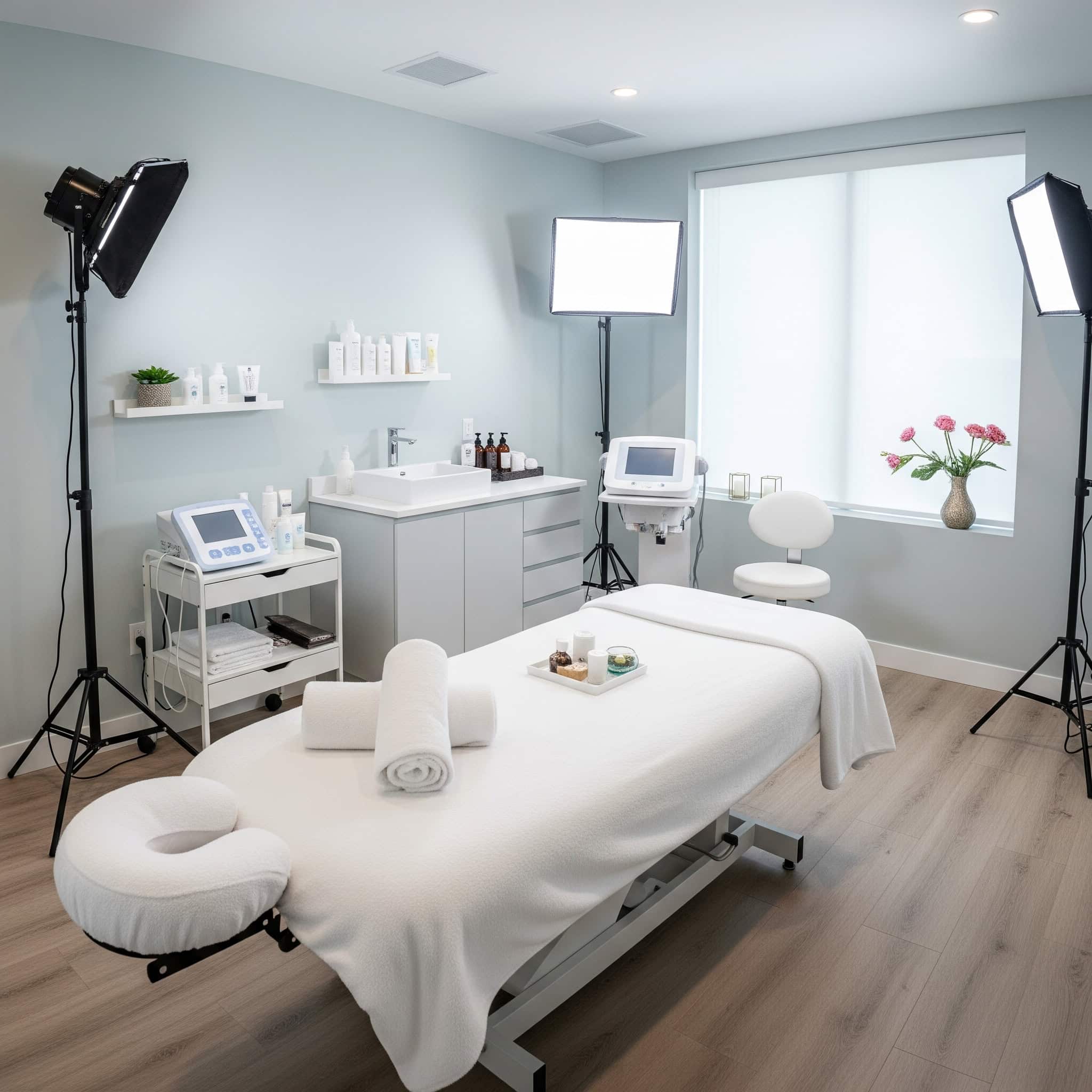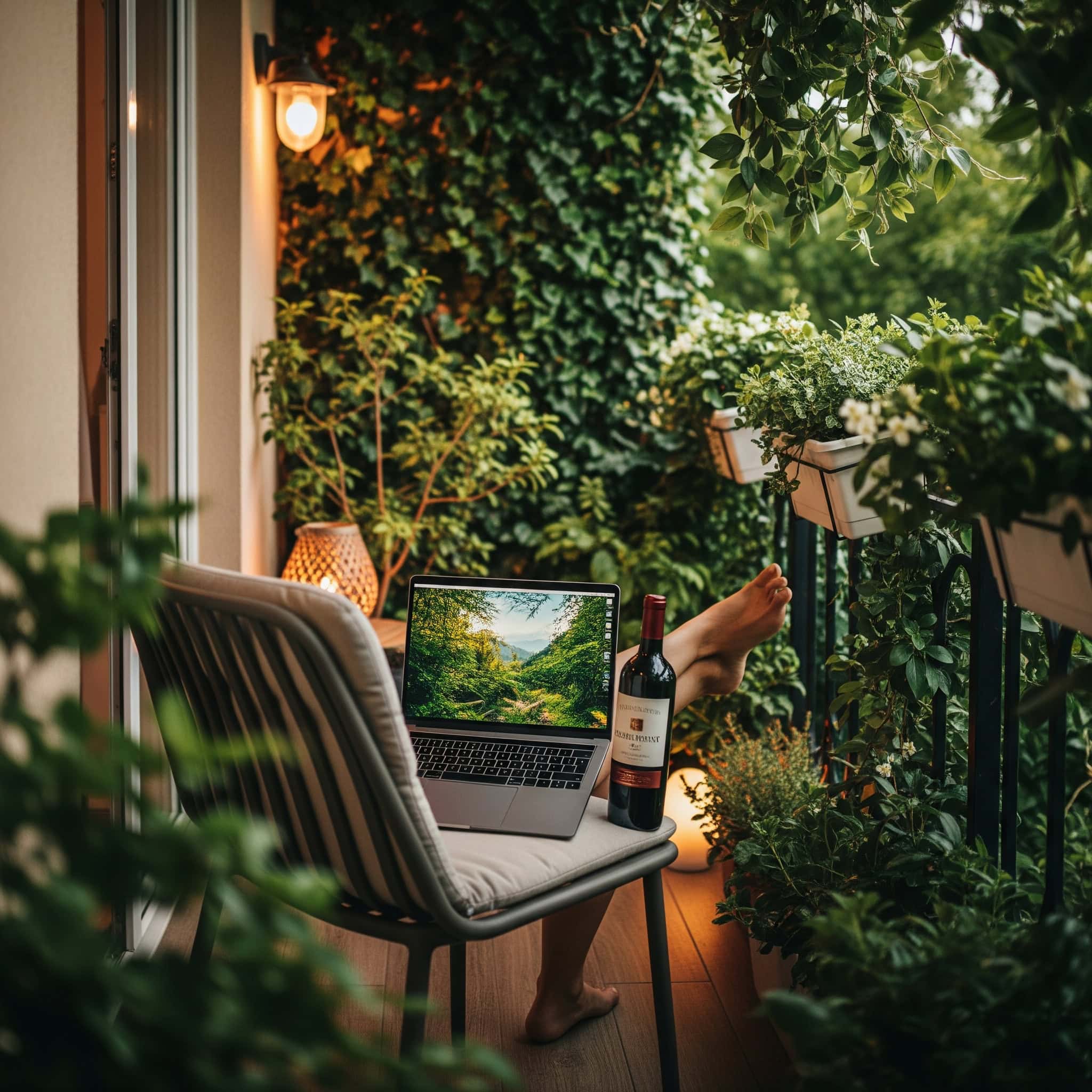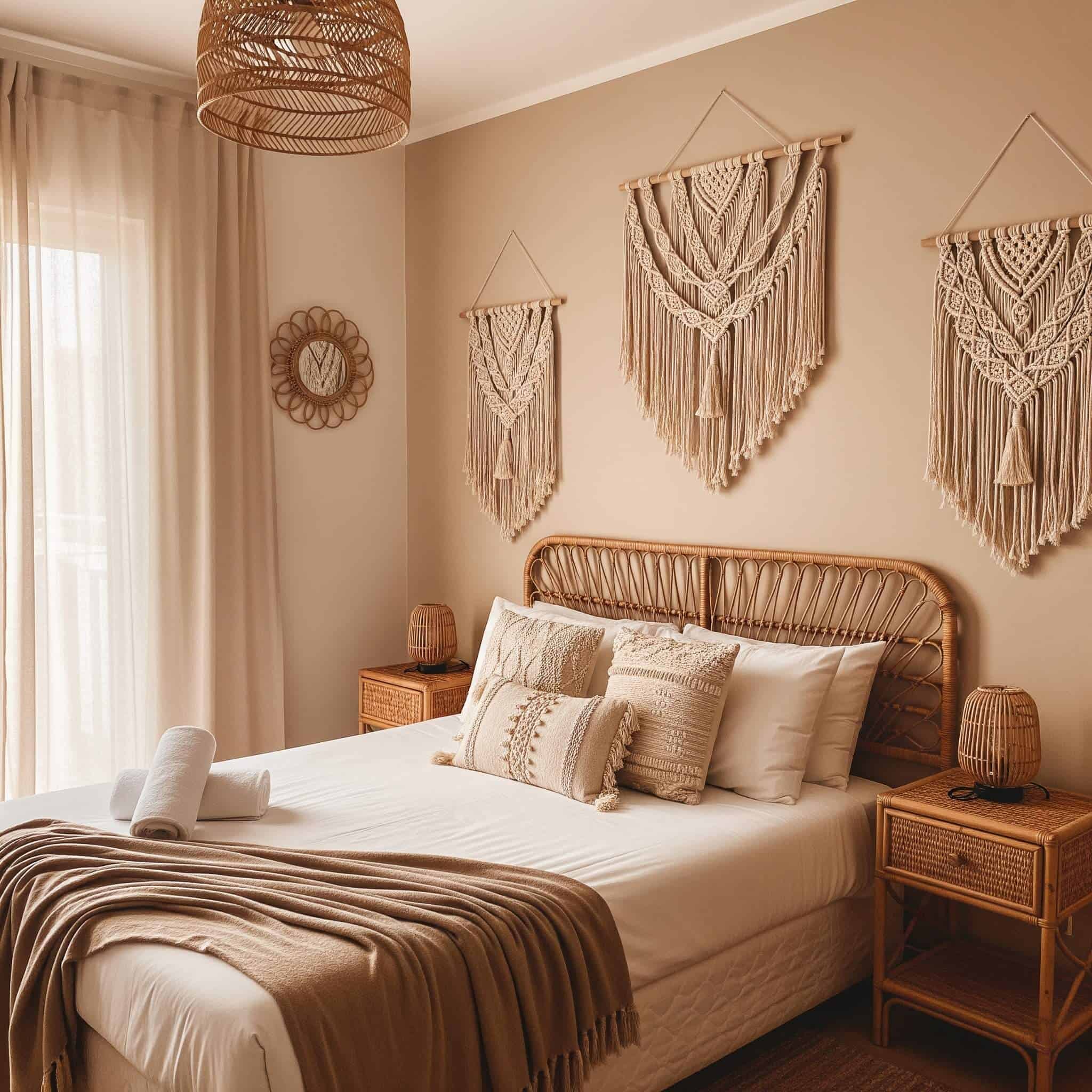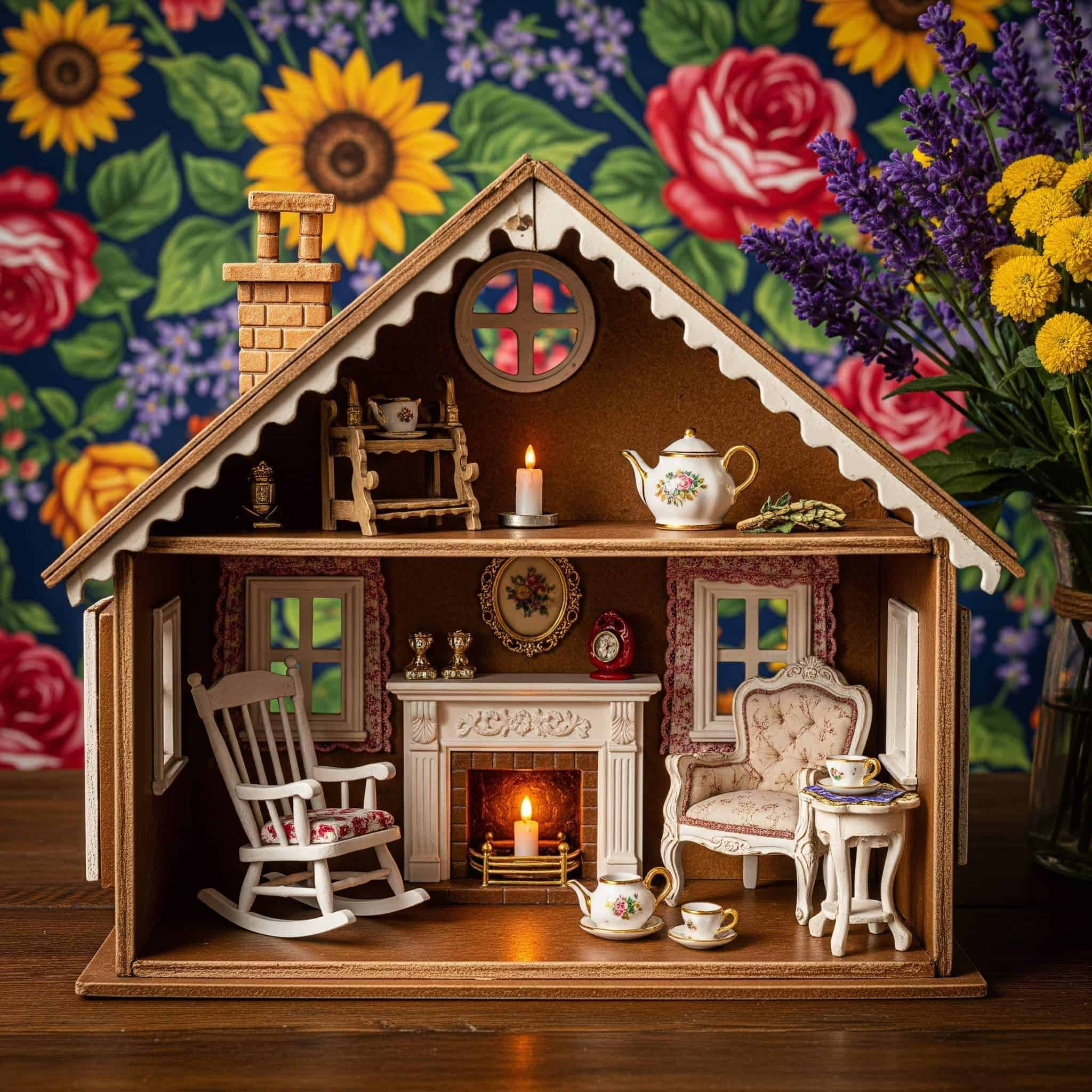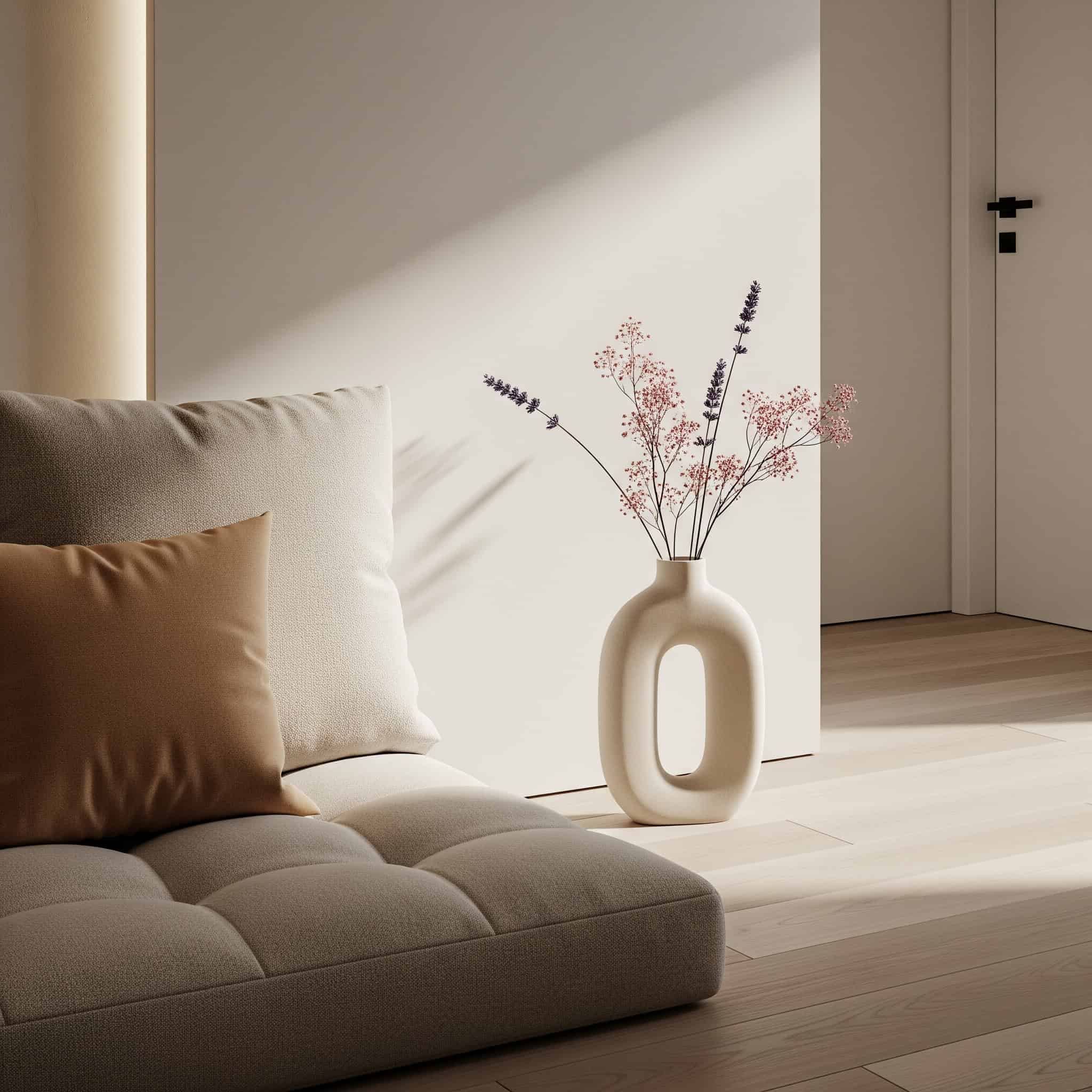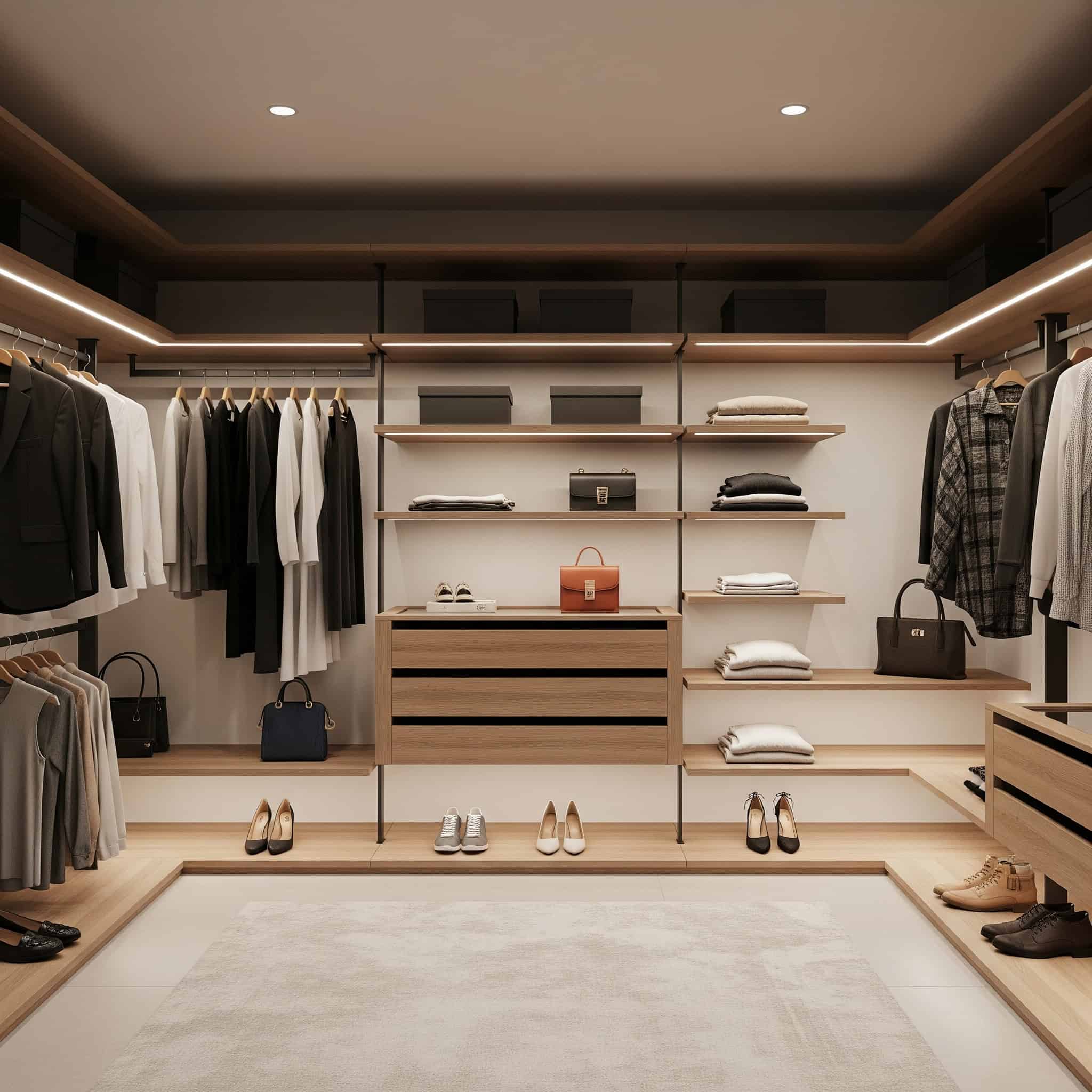25 Stunning Bedroom Decorating Ideas That Will Transform Your Space in 2025
According to a recent survey by the National Association of Home Builders, 78% of homeowners plan to renovate their bedrooms in the next year, making it the most targeted room for home improvements. I recently updated my own bedroom after five years of the same tired look, and the difference in my sleep quality and overall mood has been remarkable. Your bedroom serves as your personal sanctuary—a place where you begin and end each day. The following 25 ideas will help you create a space that’s not only visually appealing but also functional and aligned with the latest trends for 2025.
Table of Contents
-
Statement Bedroom Fundamentals
-
Color and Texture Innovations
-
Lighting and Technology Integration
-
Sustainable and Wellness-Focused Elements
-
Space Optimization and Organization
-
How Jiffy Junk Can Help Transform Your Bedroom
-
Final Thoughts
Statement Bedroom Fundamentals
The foundation of any well-designed bedroom starts with key furniture pieces that set the tone for your entire space. These fundamental elements create visual impact while serving essential functions. From dramatic bed frames to innovative storage solutions, these statement pieces combine style with practicality to form the backbone of your bedroom design.
Statement pieces should balance visual impact with functionality—you’ll want to consider both how something looks and how useful it is when picking out the main elements for your bedroom. This balance is crucial for creating a space that’s both beautiful and practical.
The scale of statement furniture should be proportionate to your room dimensions. I’ve seen too many bedrooms where oversized pieces make the room feel cramped, while undersized pieces in large rooms look disconnected and lost in the space. Getting the proportions right makes all the difference.
1. Canopy Bed Frames
Canopy beds are making a strong comeback in 2025, offering dramatic vertical interest that draws the eye upward. Modern versions range from traditional four-poster designs with flowing fabric to sleek metal frames with minimalist lines. These statement pieces instantly become the focal point of any bedroom while creating a defined sleeping area that feels both luxurious and cozy.
Before you rush out to buy a canopy bed, check your ceiling height. You’ll need at least 8 feet minimum, with 9+ feet being ideal for the full canopy effect without creating a cramped feeling. I learned this the hard way in my first apartment where my canopy bed made my low-ceiling bedroom feel like a cave!
Material selection impacts maintenance needs significantly. Metal frames require minimal upkeep while fabric elements need regular cleaning and occasional replacement. I’ve found that lighter fabrics collect less dust than heavier ones, making them a practical choice for busy households.
2. Platform Beds with Integrated Storage
Platform beds with built-in storage offer practical solutions for bedrooms of any size. These multifunctional pieces eliminate the need for additional storage furniture, making them perfect for smaller spaces. Options include side drawers, hydraulic lift mechanisms that reveal storage compartments, or open shelving built into the frame. The clean lines of platform designs work particularly well with contemporary and minimalist aesthetics.
Before selecting a new platform bed, consider scheduling a professional mattress removal service to properly dispose of your old mattress and create space for your new bedroom centerpiece.
Weight capacity varies significantly by construction type. Solid wood platforms typically support 1,000+ pounds while particleboard versions may max out at 500 pounds. This matters more than you might think, especially if you have a heavier mattress or share your bed with a partner.
Hydraulic mechanisms require 2-3 feet of clearance space for proper operation and typically last 7-10 years before potential replacement is needed. I recommend leaving extra space around the bed if you opt for a hydraulic model to ensure you can fully open it without hitting walls or other furniture.
A client in a 650-square-foot apartment replaced her traditional bed frame and dresser with a platform bed featuring six large drawers. This single change freed up 12 square feet of floor space previously occupied by a chest of drawers, while providing even more storage capacity. The visual simplification made her bedroom feel significantly larger, and the morning routine became more efficient with clothing stored directly beneath the sleeping area.
3. Upholstered Headboards
Upholstered headboards add softness and texture to bedroom designs while providing comfortable back support for reading or watching TV in bed. The 2025 trend favors bold shapes like curved and asymmetrical designs alongside classic tufted styles. Fabrics range from performance velvet and bouclé to sustainable options like recycled polyester and organic cotton, offering both visual interest and tactile comfort.
The sound absorption properties of these headboards vary by material. Velvet and thick woven fabrics can reduce echo by up to 40% in bedrooms with hard surfaces like wood floors or large windows. This acoustic benefit creates a more peaceful bedroom environment that many people don’t consider when shopping for headboards.
Stain resistance treatments like Crypton or Sunbrella extend longevity but require specific cleaning protocols to maintain effectiveness. If you’re prone to midnight snacks or morning coffee in bed (I’m guilty!), these treatments are worth the investment.
4. Floating Nightstands
Floating nightstands create visual space in bedrooms by eliminating legs and keeping floor areas clear. These wall-mounted solutions work exceptionally well in smaller bedrooms where every square inch matters. Designs range from minimalist shelves to more substantial units with drawers and hidden charging stations. The floating effect creates a contemporary, airy feeling that makes rooms appear larger.
Weight capacity depends on mounting hardware and wall construction. Proper installation into studs can support 50-75 pounds per bracket, which is plenty for most bedside items. I’ve installed several floating nightstands and found that using a stud finder is absolutely essential—don’t trust the wall anchors alone for anything you’ll be putting weight on daily.
Installation height standards place the surface 2-4 inches above mattress level for optimal ergonomic access while seated in bed. This might seem like a small detail, but getting the height right makes a huge difference in comfort when reaching for your phone or water glass at night.
5. Statement Ceiling Treatments
The “fifth wall” is getting major attention in 2025 bedroom designs. Statement ceilings transform ordinary rooms into extraordinary spaces through architectural elements like exposed beams, coffered designs, or decorative molding. For less permanent options, removable wallpaper, paint treatments, or fabric installations create dramatic overhead interest without structural changes. These unexpected focal points add character and dimension to bedrooms of all sizes.
Visual ceiling height can be manipulated through design choices. Vertical stripes or patterns that draw the eye to the center make ceilings appear higher. I used this trick in my guest bedroom with low ceilings, and visitors always comment on how spacious it feels.
Light reflectivity ratings (LRR) of ceiling materials impact room brightness significantly. Glossy finishes reflect up to 80% more light than matte treatments, which can make a huge difference in rooms with limited natural light. I prefer semi-gloss finishes in darker bedrooms to maximize light reflection without creating glare.
Color and Texture Innovations
The strategic use of color and texture creates depth, interest, and emotional resonance in bedroom spaces. The latest innovations move beyond basic paint choices to incorporate multidimensional surfaces, unexpected color combinations, and tactile elements that engage the senses. These approaches add personality and warmth to bedrooms while influencing the psychological experience of the space.
When updating your bedroom color scheme, you might need to dispose of old furniture that doesn’t match your new aesthetic. Our furniture removal services can help you responsibly get rid of outdated pieces to make room for your fresh design.
Color psychology research shows bedroom hues directly impact sleep quality. Blue tones can lower heart rate by 4-8 beats per minute compared to stimulating colors like red. I switched from a vibrant red accent wall to a soft blue-gray in my own bedroom and noticed improved sleep within days.
Texture layering follows the rule of three—combining smooth, medium, and highly textured elements creates visual balance without overwhelming the senses. This principle has guided my bedroom designs for years, and it’s never failed to create spaces that feel complete and harmonious.
6. Two-Tone Wall Treatments
Two-tone walls offer a fresh alternative to single-color rooms or accent walls. This technique involves painting walls with horizontal divisions, typically with darker colors on the bottom and lighter shades above. The approach grounds the space while making ceilings appear higher. Popular variations include color blocking, chair rails with different treatments above and below, or combining paint with wallpaper for textural contrast.
Optimal division placement follows the 1/3 to 2/3 ratio. Placing the horizontal line approximately 36-40 inches from the floor creates the most balanced visual effect. I’ve experimented with different heights in various rooms and found this ratio consistently produces the most pleasing results.
Color temperature differences between upper and lower sections should stay within 15-20 degrees on the color wheel for cohesive results. Going beyond this range can create jarring transitions that fight with each other visually. When I work with clients, I always bring a color wheel to demonstrate this principle—it’s a game-changer for their understanding of color relationships.
7. Textured Wall Panels
Textured wall panels add dimension and sophistication to bedroom walls. Options range from soft fabric-covered acoustic panels that improve sound quality to wooden slat designs that create shadow play with lighting. These installations transform flat surfaces into architectural features with depth and character. Many panels now come in modular systems that make installation accessible for DIY enthusiasts.
Acoustic performance is measured in Noise Reduction Coefficient (NRC). Quality bedroom panels typically rate 0.70-0.95, absorbing up to 95% of sound waves. This technical detail matters tremendously in urban bedrooms or homes with multiple occupants where noise control impacts sleep quality.
Installation systems include direct adhesive, clip systems, or French cleats. Weight and wall type determine the appropriate mounting method. I’ve installed panels using all three methods and found that clip systems offer the best balance of security and future flexibility if you want to change your design later.
8. Nature-Inspired Color Palettes
Biophilic color schemes drawn from nature dominate 2025 bedroom trends. Earthy tones like sage green, terracotta, and stone gray create restful environments that connect indoor spaces with the natural world. These colors work well in various lighting conditions and pair beautifully with natural materials like wood, linen, and jute. The organic palette promotes relaxation and improves sleep quality through its subtle, non-stimulating properties.
Light Reflectance Value (LRV) of nature-inspired colors typically falls in the 25-65% range. This provides enough reflectivity for brightness without harsh glare. When selecting paint, I always check the LRV value—it’s printed on most paint chips but often overlooked by homeowners.
Color stability varies by paint formulation. Mineral-based paints maintain true color for 7-10 years while standard latex may shift within 3-5 years. This is particularly noticeable with nature-inspired greens, which can yellow over time with lower-quality formulations.
|
Nature-Inspired Color |
Psychological Effect |
Best Pairings |
Room Size Impact |
|---|---|---|---|
|
Sage Green |
Calming, balancing |
Natural wood, cream, terracotta |
Makes spaces feel larger |
|
Terracotta |
Grounding, warming |
Navy, olive, natural linen |
Creates cozy intimacy |
|
Stone Gray |
Neutralizing, soothing |
Soft whites, pale blue, natural textures |
Versatile for any size |
|
Forest Green |
Rejuvenating, stabilizing |
Brass accents, warm woods, ivory |
Adds depth to large spaces |
|
Ocean Blue |
Relaxing, meditative |
White, sand tones, light woods |
Expands visual space |
9. Layered Textiles
Textile layering creates depth, comfort, and visual interest in bedroom designs. The 2025 approach combines varied textures rather than matching sets—think linen sheets with velvet pillows, chunky knit throws over smooth cotton duvets, and woven wall hangings against painted surfaces. This multidimensional strategy adds warmth and personality while allowing for seasonal adjustments through simple textile swaps.
Textile weight measurement (GSM or grams per square meter) indicates quality and durability. Bedroom linens range from lightweight summer sheets (180-200 GSM) to heavyweight winter bedding (400-600 GSM). Understanding these measurements has helped me create year-round comfort in my bedroom without overheating in summer or freezing in winter.
Fiber composition affects temperature regulation significantly. Natural fibers like cotton and linen can absorb 20-30% of their weight in moisture while maintaining breathability. This property makes them ideal for bedding that needs to adjust to body temperature throughout the night. I’ve switched all my bedding to natural fibers and noticed much more consistent comfort.
10. Wallpapered Ceilings
Ceiling wallpaper creates unexpected visual interest overhead. This trend works particularly well in bedrooms, where you naturally spend time looking upward. Popular 2025 patterns include subtle textures, celestial themes, botanical prints, and geometric designs. The technique draws attention to architectural features like tray ceilings or creates the illusion of height in standard rooms. Removable wallpaper options make this trend accessible for renters.
Application techniques differ based on paper type. Traditional papers require paste-the-wall methods while peel-and-stick versions allow for repositioning within 24-48 hours of initial placement. I’ve tried both types and found that paste-the-wall is actually easier for ceilings despite seeming more complicated—the paper doesn’t stretch or sag during application.
Pattern scale should be calculated based on ceiling height. Patterns should be viewed from at least 3x their repeat distance for proper visual appreciation. In practical terms, this means smaller patterns for lower ceilings and larger patterns for higher ones. I made the mistake of using a large-scale pattern on an 8-foot ceiling once, and it felt like the ceiling was pressing down on the room!
Lighting and Technology Integration
Modern bedroom design seamlessly blends lighting and technology to enhance both functionality and atmosphere. Strategic lighting creates different moods while smart technology adds convenience and efficiency. The integration of these elements should feel intuitive rather than intrusive, supporting your daily routines while maintaining the bedroom’s primary purpose as a restful sanctuary.
Layered lighting requires three distinct types—ambient (general illumination), task (focused functional light), and accent (decorative highlights)—each controlled independently for maximum flexibility. I’ve found that most bedroom lighting problems stem from relying on a single overhead fixture for everything. Adding table lamps, wall sconces, and accent lighting transformed how I use my bedroom throughout the day.
Technology integration follows the 80/20 visibility rule—80% of tech elements should be concealed or visually minimized while 20% can be design features. This balance maintains the restful atmosphere essential for good sleep while providing the convenience we’ve come to expect. In my bedroom, I’ve hidden cords, tucked away routers, and concealed speakers, while allowing my smart display and artistic lamp to serve as visible tech elements.
11. Smart Lighting Systems
Smart lighting transforms bedroom functionality through programmable settings that adjust to your needs throughout the day. These systems allow you to create preset scenes for different activities—bright morning light for waking up, moderate illumination for getting dressed, and warm, dim lighting for evening relaxation. Voice control, motion sensors, and scheduled routines eliminate the need for manual adjustments while improving energy efficiency.
Color temperature range in quality systems spans 1800K (candlelight) to 6500K (daylight)—with research showing 2700-3000K optimal for evening relaxation. This technical detail makes a huge difference in sleep quality. I programmed my bedroom lights to gradually shift from daylight to warm tones in the evening, and my sleep tracker showed improved deep sleep within a week.
Power consumption differences are significant between traditional and smart lighting. Smart LED systems use 75-80% less electricity than traditional incandescent bulbs while offering 15,000-25,000 hour lifespans. My energy bill dropped noticeably after switching my entire bedroom to smart LEDs, even with the added functionality.
A couple struggling with different sleep schedules installed a smart lighting system programmed to their individual routines. When the early-rising partner wakes at 5:30 AM, motion sensors trigger subtle floor-level lighting at 10% brightness, illuminating the path to the bathroom without disturbing the sleeping partner. The system gradually increases light intensity in the dressing area only, mimicking natural sunrise. In the evening, lights automatically transition to warmer tones (2700K) at 9:00 PM, signaling to the body that it’s time to prepare for sleep. This personalized approach improved their sleep quality while respecting their different schedules.
12. Pendant Bedside Lighting
Pendant lights as bedside illumination free up valuable nightstand space while adding architectural interest. Hanging fixtures create focused task lighting for reading while contributing to the room’s design aesthetic. Adjustable height pendants offer flexibility, while fixed installations with dimming capabilities provide adaptable light levels. This approach works particularly well in smaller bedrooms where floor space is at a premium.
Optimal hanging height places the bottom of the pendant 24-30 inches above the mattress surface—providing proper illumination without glare. I hung mine slightly higher at first and found myself constantly squinting; adjusting to the proper height made reading in bed much more comfortable.
Beam spread specifications determine coverage area. Narrow beam angles (15-30°) create focused reading light while wider spreads (60-120°) provide general illumination. For bedside reading, I recommend a medium beam spread around 40-50° that gives enough light for reading without disturbing your partner.
13. Integrated Charging Solutions
Built-in charging solutions eliminate cord clutter while keeping devices accessible. The 2025 trend focuses on seamless integration—wireless charging pads built into nightstand surfaces, USB ports incorporated into headboards, or dedicated charging drawers with power management systems. These thoughtful additions support our connected lifestyles without compromising bedroom aesthetics or tranquility.
Charging efficiency varies by technology. Qi wireless chargers typically operate at 70-80% efficiency compared to direct cable connections. This means they generate more heat and take longer to charge devices. I’ve found the convenience worth the trade-off for overnight charging, but I still use cables when I need a quick power boost.
Heat management systems in quality furniture prevent temperature issues. Proper ventilation channels dissipate heat that could otherwise reach 110-120°F during charging. When shopping for furniture with built-in charging, I always check for ventilation features—they’re easy to overlook but crucial for device safety and furniture longevity.
14. Backlit Headboards
Backlit headboards create ambient lighting that transforms bedroom atmospheres. LED strips installed behind floating headboards or within custom designs produce a soft glow that reduces the need for harsh overhead lighting in the evening. This lighting technique adds depth and dimension to the room while providing practical illumination for nighttime navigation without disturbing sleep patterns.
Light diffusion distance affects visual comfort significantly. Optimal placement sets LEDs 3-4 inches from the wall to create even illumination without visible hot spots. I’ve experimented with different distances and found that closer placement creates distracting bright spots while greater distances diminish the effect.
Color rendering index (CRI) ratings should exceed 90 for bedroom applications—ensuring accurate color representation of bedroom textiles and wall colors. Lower CRI values make colors look flat or distorted, which can ruin the effect of carefully chosen bedroom decor. I always check the CRI rating when buying LED strips; it’s worth paying extra for higher quality in this regard.
15. Hidden Technology Solutions
Concealed tech maintains the bedroom’s restful atmosphere while providing entertainment and convenience when needed. Motorized TV lifts, projector screens that descend from ceiling cavities, or artwork that transforms into displays offer functionality without visual technology dominance. These solutions preserve the bedroom’s primary purpose as a sanctuary while accommodating modern entertainment preferences.
Motorized mechanism durability is measured in cycles. Quality systems offer 7,000-10,000 complete operations before maintenance is typically required. This translates to about 10 years of daily use, making them a worthwhile investment for primary bedroom entertainment.
Ventilation requirements for concealed electronics prevent overheating. Proper systems incorporate air circulation channels with minimum clearances of 2-3 inches on all sides. I learned this lesson the hard way after installing a TV in a cabinet without adequate ventilation—the shortened lifespan of the television made me wish I’d planned better from the start.
Sustainable and Wellness-Focused Elements
The integration of sustainability and wellness principles has moved from trend to essential consideration in bedroom design. These elements create healthier sleep environments while reducing environmental impact. From material selections to air quality improvements, these approaches benefit both personal wellbeing and planetary health without compromising style or comfort.
Indoor air quality in bedrooms can be 2-5 times more polluted than outdoor air. This startling fact makes sustainable materials and wellness elements directly relevant to your health. I installed an air quality monitor in my bedroom and was shocked by the readings before making changes to my furnishings and ventilation.
Lifecycle assessment of bedroom elements should consider raw material sourcing, manufacturing processes, transportation impacts, usage duration, and end-of-life disposal options. This comprehensive approach ensures that “sustainable” products truly deserve the label. I’ve become much more selective about my purchases after researching the full lifecycle of bedroom furniture and materials.
16. Biophilic Design Elements
Biophilic design incorporates natural elements and patterns to satisfy our innate connection to nature. In bedrooms, this translates to houseplants that improve air quality, natural materials like wood and stone, organic patterns in textiles, and views or representations of outdoor environments. These elements reduce stress, improve cognitive function, and create more restorative sleep environments.
Air purification capacity varies by plant species. Bedroom-friendly options like snake plants and peace lilies can remove 87-94% of volatile organic compounds (VOCs) within 24 hours. I’ve placed several snake plants around my bedroom and noticed fewer headaches and better breathing, especially during allergy season.
Light requirements for indoor plants are measured in foot-candles. Low-light bedroom plants typically need 10-25 foot-candles compared to high-light plants requiring 1,000+ foot-candles. This measurement helps match plants to your specific bedroom conditions. I use a light meter app on my phone to check different spots in my bedroom before deciding where to place new plants.
17. Non-Toxic Materials
Non-toxic bedroom materials create healthier sleep environments by reducing exposure to harmful chemicals. This includes organic mattresses free from flame retardants, VOC-free paints and finishes, solid wood furniture without formaldehyde-based adhesives, and natural fiber textiles. These choices are particularly important in bedrooms where we spend approximately one-third of our lives.
VOC emission testing uses chamber concentration measurements. Truly low-VOC products maintain levels below 0.5 mg/m³ after 14 days. Many products labeled “low-VOC” don’t meet this stringent standard, so it’s worth checking certification details. When I repainted my bedroom, I chose a zero-VOC paint and left the windows open for a week, even though it was winter—the improved air quality was worth the temporary discomfort.
Certification standards vary in stringency significantly. GOLS (Global Organic Latex Standard) requires 95% organic content while GOTS (Global Organic Textile Standard) requires 70% organic fibers. Understanding these differences helps you make informed choices about which certifications matter most for your priorities. I focus on GOTS certification for bedding since it covers both organic content and ethical manufacturing practices.
|
Material Type |
Conventional Concerns |
Non-Toxic Alternatives |
Certification to Look For |
|---|---|---|---|
|
Mattresses |
Chemical flame retardants, formaldehyde |
Organic latex, wool, cotton |
GOLS, GOTS, OEKO-TEX |
|
Paints |
VOCs, fungicides, biocides |
Zero-VOC formulas, mineral paints |
Green Seal, Greenguard Gold |
|
Flooring |
Formaldehyde in adhesives, vinyl toxins |
Solid hardwood, cork, natural linoleum |
FSC, FloorScore |
|
Textiles |
Pesticide residues, synthetic dyes |
Organic cotton, hemp, linen |
GOTS, OEKO-TEX Standard 100 |
|
Furniture |
Pressed wood off-gassing, toxic finishes |
Solid wood, water-based finishes |
Greenguard, SCS Indoor Advantage |
18. Air-Purifying Solutions
Air quality directly impacts sleep quality and overall health. Bedroom air purification strategies include dedicated plant corners with species known for filtering toxins, standalone air purifiers with HEPA and activated carbon filters, or built-in ventilation systems. These solutions remove allergens, pollutants, and odors to create cleaner, more breathable sleeping environments.
CADR (Clean Air Delivery Rate) measures purifier efficiency. Bedroom units should deliver 100-200 cubic feet per minute for standard room sizes. This rating tells you how quickly a purifier can clean the air in your space. I chose my bedroom air purifier based on CADR ratings matched to my room dimensions, and it makes a noticeable difference in air freshness.
Filter replacement schedules impact effectiveness dramatically. HEPA filters typically require replacement every 6-12 months while activated carbon filters saturate faster in 3-6 months. I set calendar reminders for filter changes after noticing diminished performance when I let maintenance slide.
19. Reclaimed and Repurposed Furniture
Incorporating reclaimed pieces adds character while reducing environmental impact. Vintage dressers, antique mirrors, or headboards crafted from architectural salvage bring history and uniqueness to bedroom designs. These one-of-a-kind elements create visual interest through patina and craftsmanship that’s often missing in mass-produced furniture, while extending the lifecycle of existing materials.
If you’re switching to reclaimed furniture for your bedroom makeover, our eco-friendly junk removal service can help you responsibly dispose of unwanted items, ensuring they’re recycled or donated whenever possible.
Wood moisture content in reclaimed pieces should stabilize at 6-8% for indoor use—preventing future warping or cracking. I always check moisture content with an inexpensive meter before bringing reclaimed wood pieces into my home. Several beautiful pieces I’ve found needed a few weeks in my garage to acclimate before they were bedroom-ready.
Lead testing is essential for pre-1978 painted furniture. XRF analyzers can detect lead content without damaging finishes. Many antique stores offer this testing service, or you can purchase inexpensive lead test kits. I test every vintage painted piece before bringing it into my bedroom—safety first!
20. Energy-Efficient Window Treatments
Specialized window coverings improve sleep quality while reducing energy consumption. Blackout options block light pollution that disrupts circadian rhythms, while thermal properties prevent heat loss in winter and solar gain in summer. Automated systems can be programmed to adjust throughout the day, optimizing natural light and temperature control without manual intervention.
R-value measures insulating performance. Quality cellular shades offer R-values of 4.0-5.0 compared to standard curtains at 1.5-2.0. This difference translates to real energy savings and more consistent bedroom temperatures. My cellular shades paid for themselves in energy savings within two years.
Light blocking effectiveness is measured in opacity percentage. True blackout treatments block 99-100% of light while room-darkening options block 95-99%. This small percentage difference matters tremendously for sensitive sleepers. I upgraded from room-darkening to true blackout curtains and finally stopped waking up at sunrise during summer months.
Space Optimization and Organization
Effective bedroom design maximizes available space while maintaining visual calm. Strategic organization systems eliminate clutter that disrupts sleep and creates stress. These solutions should balance accessibility with concealment, keeping necessary items within reach while maintaining the serene atmosphere essential for restful sleep.
Cognitive load research shows visible clutter increases cortisol levels by 15-20%. This means that effective organization systems directly impact your stress levels and sleep quality. I’ve experienced this myself—the difference in my relaxation level between walking into a cluttered bedroom versus a well-organized one is immediate and profound.
Space efficiency calculations should aim for 30-40% open floor area. This maintains circulation paths while avoiding overcrowding with furniture. I measure and map my bedroom layout before adding new pieces to ensure I maintain this open-space ratio. It’s tempting to fill every corner, but restraint creates a more peaceful environment.
21. Built-In Wardrobes
Custom storage solutions maximize every inch of available space while creating clean, integrated looks. Built-in wardrobes can be designed to work with room architecture—fitting into alcoves, utilizing full ceiling height, or wrapping around obstacles. Interior configurations can be customized to specific storage needs with specialized compartments for different clothing types, accessories, and personal items.
Weight capacity requirements vary by mounting method. Floor-supported cabinets can hold 500+ pounds per linear foot while wall-mounted systems typically support 100-200 pounds per linear foot. This consideration is crucial when planning what you’ll store where. I learned to place heavier items in floor-supported sections after overloading a wall-mounted shelf that pulled away from the wall.
Ventilation systems prevent moisture buildup in enclosed storage. Proper designs incorporate passive airflow channels or active systems that reduce humidity by 15-20%. This feature is often overlooked but prevents musty odors and potential mildew on stored clothing. I added small vent grilles to my built-ins after noticing a slight mustiness in rarely-worn items.
A homeowner with an awkwardly shaped bedroom featuring a sloped ceiling and chimney breast transformed these architectural challenges into assets with a custom wardrobe solution. The design incorporated shallow cabinets (12 inches deep) along the low-ceiling area for folded items and accessories, while utilizing the full-height section for hanging clothes. The chimney breast was framed with matching cabinetry to create display niches and drawer storage. This tailored approach yielded 40% more storage capacity than freestanding furniture could provide in the same space, while visually streamlining the room’s irregular features.
22. Multi-Functional Furniture
Pieces that serve multiple purposes maximize functionality in limited space. Beds with storage drawers, benches that open for linen storage, desks that convert to vanities, or nightstands with fold-out surfaces provide versatility without requiring additional square footage. These smart solutions are particularly valuable in smaller bedrooms or multi-use spaces.
Weight-bearing capacity of transforming mechanisms varies significantly between products. Quality hardware supports 200-300 pounds while budget options may limit at 100-150 pounds. This difference matters tremendously for daily use and longevity. I invested in a higher-quality convertible desk/vanity after my budget version collapsed mid-use—lesson learned!
Operation cycle testing indicates durability over time. Commercial-grade mechanisms withstand 10,000+ transformations while residential versions typically test to 2,000-5,000 cycles. For pieces you’ll use daily, this specification is worth investigating. My storage ottoman sees daily use, so I chose one with commercial-grade hinges that haven’t failed after three years of constant opening and closing.
23. Room Dividers for Zoning
Creating distinct functional areas within larger bedrooms enhances usability. Decorative screens, open shelving units, curtain systems, or partial walls define spaces for sleeping, dressing, working, or relaxing without full structural separation. These flexible solutions can be repositioned as needs change, offering adaptability without permanent modifications.
Sound transmission class (STC) ratings indicate acoustic separation between zones. Fabric dividers provide minimal isolation (STC 3-5) while substantial partial walls can achieve STC 20-25. If you’re creating a work area within your bedroom, this rating helps determine how well phone calls or video conferences will be isolated from the rest of the space.
Stability factors depend on design and height. Freestanding dividers require base depths of at least 1/3 their height to prevent tipping. I learned this proportion through trial and error after a tall screen toppled over when my cat brushed against it. Now I always ensure proper base depth or secure tall dividers to walls or ceiling.
24. Vertical Storage Solutions
Utilizing wall space effectively expands storage capacity without consuming floor area. Floating shelves, wall-mounted cabinets, pegboard systems, and over-door organizers take advantage of vertical space that often goes unused. These solutions work particularly well in smaller bedrooms where floor space is limited but wall area is abundant.
After installing vertical storage solutions, you may need help with decluttering and removing old storage furniture. Our decluttering guide offers tips on how to efficiently organize your bedroom space while preparing items for removal.
Load capacity depends on mounting methods and wall construction. Toggle bolts in drywall support 30-50 pounds while direct stud mounting can hold 100+ pounds per attachment point. I always locate studs for anything heavier than a small shelf—it’s worth the extra effort during installation to prevent future wall damage.
Visual weight distribution follows the 60-30-10 rule for balanced arrangements. Place 60% of items at eye level or below, 30% above eye level, and 10% at highest points. This distribution creates visual harmony while keeping frequently used items most accessible. I rearranged my wall storage following this rule and was amazed at how much more balanced and intentional the room felt immediately.
25. Minimalist Organization Systems
Hidden organization maintains visual calm while keeping items accessible. Drawer dividers, under-bed containers, closet systems with pull-out features, and furniture with concealed compartments keep necessities organized but out of sight. These systems support the minimalist principle that everything should have a designated place, reducing the mental burden of visible clutter.
Retrieval efficiency metrics show items should be accessible within 2-3 movements. Properly designed systems eliminate the need to move multiple items to access stored objects. I reorganized my bedside drawer with this principle in mind, and now I can reach anything I need in the dark without fumbling through layers of stuff.
Material thickness standards ensure durability in daily use. Drawer organizers should be minimum 2mm for soft materials and 5mm for rigid materials to prevent warping under regular use. I’ve replaced flimsy organizers with sturdier versions and found they maintain their shape much better over time, even with heavy use.
How Jiffy Junk Can Help Transform Your Bedroom
Before implementing your bedroom redesign, clearing out existing items creates a clean slate for your new vision. Jiffy Junk provides comprehensive removal services for old furniture, mattresses, and accumulated clutter that no longer serve your needs. Their team handles all the heavy lifting and disposal logistics, saving you time and potential injury. What distinguishes their service is their commitment to sustainability—they prioritize donation and recycling over landfill disposal whenever possible, aligning with eco-conscious design principles.
When updating your bedroom space, our furniture removal service can help you clear out old pieces to make way for your new design vision, ensuring responsible disposal of unwanted items.
Professional junk removal services can reduce renovation timelines by 30-40% compared to DIY disposal approaches. When I renovated my bedroom last year, having professionals remove the old furniture and debris saved me at least a week of work and multiple trips to donation centers and disposal facilities.
Environmental impact assessment shows proper furniture recycling can divert up to 80% of bedroom renovation waste from landfills when handled by specialized services. This percentage impressed me enough to choose professional removal over DIY disposal for my recent bedroom update.
The Jiffy Junk Process
Getting started with Jiffy Junk involves a straightforward process designed for convenience. Their virtual estimation allows you to show what needs removal without scheduling an in-person visit first. Once booked, their uniformed professionals arrive in a designated time window, quickly assess the items, and provide upfront pricing. The team then handles all aspects of removal—from disassembly of large pieces to careful navigation through your home without damaging walls or floors. This hassle-free approach lets you focus on the exciting aspects of your bedroom transformation.
Professional junk handlers are trained in proper lifting techniques that reduce the risk of personal injury by 85-90% compared to DIY removal. I threw my back out trying to move a heavy dresser during my last bedroom update—a mistake I won’t repeat now that I know professional services are so affordable.
Specialized equipment includes furniture dollies rated for 800-1000 pounds and protective materials that prevent wall and floor damage during item removal. This professional approach eliminates the scuffs and dents that often occur during DIY furniture removal. My hallway walls thank me for hiring professionals for my last bedroom clearout!
Sustainable Disposal Options
Jiffy Junk’s commitment to responsible disposal aligns perfectly with eco-conscious bedroom design. Their team evaluates each item for potential reuse—directing gently used furniture to community organizations, recycling applicable materials, and minimizing landfill contributions. This approach extends the lifecycle of bedroom items while supporting community needs. For those implementing sustainable bedroom designs, this responsible removal process forms the foundation of an environmentally mindful transformation.
Material separation protocols identify 12-15 distinct recyclable categories from typical bedroom clearouts—far more than municipal recycling programs typically process. This detailed sorting ensures maximum material recovery and minimum waste. I was impressed to learn how many components of my old bedroom furniture could be recycled when properly disassembled.
Carbon footprint reduction through consolidated removal averages 40-60% compared to multiple individual disposal trips. This efficiency comes from optimized routing and full truckloads rather than partially filled personal vehicles making multiple trips. The environmental benefit of professional removal services is substantial when you consider the full picture.
Final Thoughts
Transforming your bedroom involves thoughtful planning and execution across multiple elements. The ideas presented offer various entry points based on your priorities—whether enhancing sleep quality, improving organization, incorporating technology, or embracing sustainability. Start by identifying your primary pain points and addressing those first. Remember that bedroom design should ultimately serve your personal needs rather than simply following trends. By implementing changes that genuinely support your lifestyle and preferences, you’ll create a space that provides lasting comfort and functionality.
Satisfaction studies show personalized bedroom designs maintain 85-90% approval ratings after 5+ years compared to trend-focused designs that typically decline to 40-50% satisfaction within 2-3 years. This stark difference highlights the importance of designing for your actual needs rather than what’s currently popular. My own bedroom has evolved gradually based on how I actually use the space, and I’ve been happier with it than any trend-based design I’ve tried.
Sleep quality improvements correlate directly with thoughtful bedroom design. Participants in bedroom renovation studies report 15-25% better sleep metrics after implementing cohesive design plans. I’ve tracked my own sleep data before and after bedroom updates and seen similar improvements, particularly after addressing lighting, temperature control, and clutter reduction.
Making Your Bedroom Transformation a Reality
Moving from inspiration to implementation requires breaking down your bedroom project into manageable phases. Begin with a thorough decluttering—this is where Jiffy Junk provides invaluable assistance. Next, address structural elements like wall treatments and built-ins before moving to furniture placement and lighting. Finally, layer in textiles and personal touches that make the space uniquely yours. This systematic approach prevents overwhelm while ensuring each element receives proper attention. Ready to start your bedroom transformation? Contact Jiffy Junk today for a free estimate on clearing the way for your new design vision.
Before starting your bedroom transformation, consider scheduling a quick and painless bed bug furniture removal service if you suspect any infestations in your current furniture, ensuring your new space starts completely fresh and clean.
Project sequencing significantly impacts completion timelines. Properly ordered bedroom renovations typically finish 30-40% faster than unstructured approaches. I’ve renovated several bedrooms and found that following a logical sequence prevents the frustrating rework that happens when you paint before addressing electrical needs or install flooring before completing messy construction.
Budget allocation research indicates setting aside 10-15% contingency funds prevents project delays due to unexpected expenses or opportunities for upgrades. I always build this buffer into my renovation budgets after learning the hard way that surprises almost always arise—whether it’s discovering electrical issues behind walls or falling in love with a slightly more expensive light fixture that perfectly completes the space.
